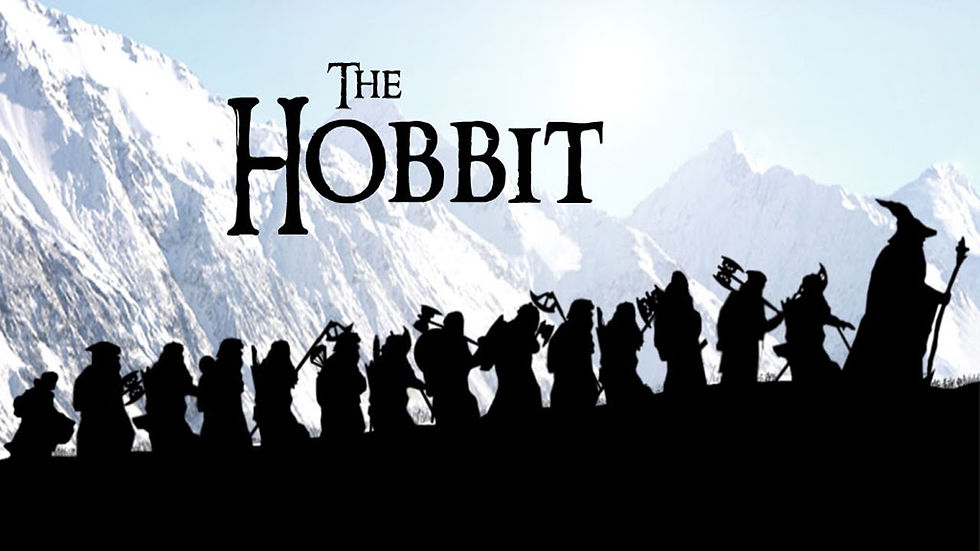In The Makings of Middle Earth
- amynoreo
- Sep 24, 2017
- 3 min read
As a writer, J.R.R. Tolkien has been an inspiration to me in many ways. The depth of history that he created for Middle Earth is astounding. He created at least half a dozen different languages for the peoples of his world. He created lands and destroyed them. He wrote love stories, great battles, and peaceful lands for readers of all ages. But in the end, he was a writer just like any other. He wrote, crossed out, wrote over, threw away, and revised just like the rest of us. It’s reassuring to know even someone we consider “the best” is just as human as we are.
Through several different sources (mainly A Brief History of the Hobbit ) I’ve been able to explore a little of his creative process, and some of the revisions he went through in his well known books, especially, The Hobbit.

Today, I thought I’d share with you some of his original plans for the now well known story. For instance, the famous dwarf leader that we know as Thorin Oakinshield, did not always bare that name; in fact Tolkien didn't give him that name until he came to where they’d just come to the edge of Lake Town, after their barrel ride out of the woodland realm. Thorin, originally bore the name Gandalf, when he was created. From what I understand, Tolkien decided to change his name because “Gandalf” means “wand-elf.” It simply wouldn’t do to have a dwarf with “elf” in his name.
Speaking of Gandalf, our favorite wizard was also known by another name in the beginning. His name was, wait for it...Bladorthin! Yikes! I must say, I’m beyond relieved the poor wizard wasn’t stuck with his original name. I don’t think anyone could have kept a straight face if Bilbo, in The Lord of the Rings, had cried “I want to see mountains again. Mountains, Bladorthin! ”
This next bit of trivia doesn’t surprise me, as it seems a very logical course for the story to take, especially as a first draft. In the original outline of The Hobbit, it was Bilbo, not Bard the bowman, who slew the dragon, Smaug. He did it so he could earn his share of the treasure, Girions gem, or as we know it, the Arkenstone.
The Arkenstone itself went through some changes. At first the Dwarves were quite willing to part with it. It solved the problem of how Bilbo was to get his share of the treasure back to the Shire. I mean, how do you haul a fourteenth share of a vast treasure like Thror had, over half of Middle Earth? But as the story evolved, so did the Artenstone's importance, eventually becoming the one thing that Thorin would never part with.
The Hobbit aside, I’ll leave you with some interesting tidbits about another of our favorite characters in Middle Earth.
The beloved Dunidine ranger, Aragorn, son of Arathon, was not always destined to be a Numenorian king. In his earliest stages he was a Hobbit. His name was Trotter, so given because of the large wooden shoes he wore. He was Trotter, the Hobbit ranger! Imagine what a different story The Lord of the Rings would be if he had remained such.
In the extended edition of The Two Towers, we learn that Aragorn is 87. As far as we know, his entire childhood was spent at Rivendell, so when Bilbo came to the last homely house for the first time, he would have seen a young Aragorn, just ten years old at the time.
There's so much more to discover about the world Tolkien created, and the process he went through to make it. A Brief History of the Hobbit is an amazing resource, though not by any definition brief (say hello to 542 pages), and not for the faint of heart. I highly recommend doing your own exploring. Take some time and journey through the amazing depth of Middle Earth, that Tolkien took so much care to create.









Comments